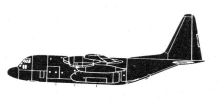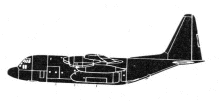Incident Overview

Description
The crew landed the Hercules on runway 27L at Al Asad Air Base, Iraq, with the aid of Night Vision Goggles. The pilot braked aggressively and taxied at a high speed after landing because the crew was not able to reduce power on the no. 2 engine. Three of the four brakes failed and a fire erupted in a wheel well. The crew and 56 passengers safely evacuated the aircraft and were uninjured. Firefighters immediately extinguished the fire when the aircraft stopped, but extensive damage was sustained on the left side of the C-130. The primary cause of the mishap was pilot and crew error. Improper and excessive use of brakes combined with excessive taxi speeds resulted in severe hot brakes and eventual catastrophic mechanical failure of three of the four brakes (left aft, left forward and right forward). The inability of the Mishap Crew (MC) to down speed engines, the refusal of the Mishap Pilot (MP) to use engine reverse during taxi, failure to shutdown engines to control taxi speed, and excessive use of brakes during the high speed taxi were found to be causal. The superheated brakes within the wheel assemblies caused brake seal deterioration and subsequent failure, thereby introducing atomized hydraulic fluid. The fluid subsequently ignited, creating an extensive wheel well fire causing significant damage to the aircraft. There is also substantial evidence to indicate that three other factors contributed to the mishap: (1) flight planning – the MC’s failure to recognize taxiway Golf was closed via Notice to Airmen (NOTAM) and Automatic Terminal Information Service (ATIS) led to an aggressive landing in an attempt to exit the runway 3,500 feet after touchdown at taxiway Golf; (2) channelized attention – the MP failed to incorporate key information into the current situation resulting in a severe degradation of situational awareness; (3) judgment and decision making – the MC executed a shortened landing roll with aggressive braking and a high speed taxi on the runway. Additionally, the MP failed to analyze the Mishap Flight Engineer (MFE)’s inability to down speed the #2 engine and forced the MC into an improper and excessive use of the brakes combined with excessive taxi speeds.
Primary Cause
Pilot and crew error, specifically improper and excessive use of brakes combined with excessive taxi speeds, resulted in severe hot brakes and catastrophic mechanical failure of three of the four brakes (left aft, left forward and right forward).Pilot and crew error, specifically improper and excessive use of brakes combined with excessive taxi speeds, resulted in severe hot brakes and catastrophic mechanical failure of three of the four brakes (left aft, left forward and right forward).Share on:




